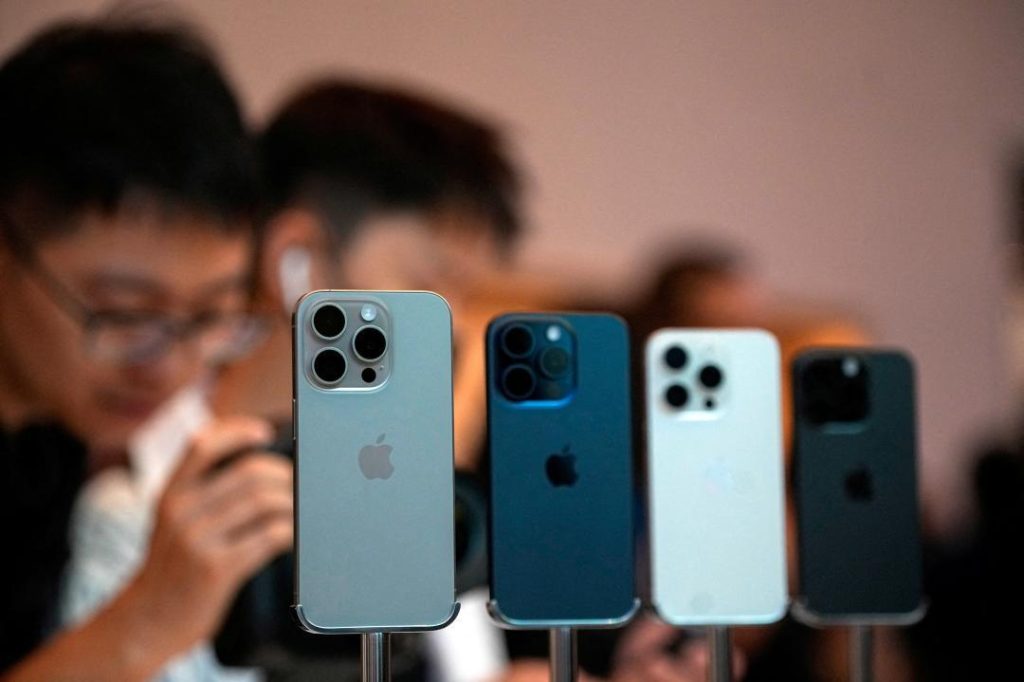
How much does it cost to make an iPhone & how may it change due to US tariffs?
The iPhone, one of the most iconic and popular smartphones in the world, has been a game-changer in the tech industry. With its sleek design, user-friendly interface, and innovative features, it’s no wonder that Apple’s iPhone has become a staple in many people’s daily lives. But have you ever wondered what it costs Apple to make an iPhone? The answer might surprise you.
According to a recent article by Moneycontrol, Apple spends approximately $580 (over ₹50,000) to make a 256GB iPhone 16 Pro. This staggering figure includes various components and manufacturing costs, such as the A18 Pro chip, rear camera systems, and display. Let’s break down the costs to understand where this money goes:
- A18 Pro chip: $90.85
The A18 Pro chip is the brain of the iPhone, responsible for processing information and handling tasks. This powerful chip is designed and manufactured by Apple, and its cost is a significant portion of the overall iPhone cost. - Rear camera systems: $126.95
The iPhone’s rear camera system is one of its standout features, offering exceptional image quality and advanced features like Portrait mode and Night mode. The cost of this system is quite substantial, making it clear why Apple emphasizes the importance of camera quality in its marketing campaigns. - Display: $37.97
The iPhone’s display is another critical component, providing an immersive and responsive user experience. Apple’s attention to detail in designing and manufacturing the display is evident in its cost, which is relatively high compared to other components. - Other components and manufacturing costs: $324.23
This includes various other components, such as the battery, storage, and casing, as well as manufacturing costs like labor, materials, and overheads.
Now that we know the breakdown of costs, let’s talk about how US tariffs might impact the iPhone’s manufacturing cost. As many iPhones are assembled in China, the 54% tariffs imposed by the US government would apply to the entire manufacturing cost. This means that Apple would need to pay an additional $324.23 (approximately ₹27,500) for each iPhone sold in the US market.
This increased cost would likely be passed on to consumers, making the iPhone even more expensive. To put this into perspective, the iPhone 16 Pro would jump from $579 (approximately ₹50,000) to around $847 (approximately ₹73,400) with the added tariffs. This significant price increase could lead to a decline in sales, especially among budget-conscious consumers.
The impact of tariffs on Apple’s bottom line is significant, but it’s not the only challenge the company faces. The ongoing global chip shortage and supply chain disruptions caused by the COVID-19 pandemic have also affected iPhone production and availability.
The future of the iPhone: will tariffs change the game?
The iPhone has been a cash cow for Apple, generating billions of dollars in revenue each year. However, the threat of tariffs and trade wars could significantly alter the smartphone landscape. Here are a few possible scenarios:
- Price increase: As mentioned earlier, Apple might need to increase the price of its iPhones to absorb the added cost of tariffs. This could lead to a decline in sales, especially among budget-conscious consumers.
- Shift to manufacturing in the US: Apple might consider relocating some of its manufacturing operations to the US to avoid tariffs. This could provide a more stable supply chain and reduce the risk of tariffs.
- Diversifying supply chains: Apple might explore alternative suppliers and manufacturing partners to reduce its dependence on Chinese manufacturers. This could help mitigate the impact of tariffs and supply chain disruptions.
- New business models: Apple might consider new business models, such as subscription-based services or cloud-based storage, to generate revenue and offset the impact of tariffs.
In conclusion, the cost of making an iPhone is complex and involves various components and manufacturing costs. The US tariffs imposed on Chinese imports could significantly increase the cost of production, leading to higher prices for consumers. While Apple is likely to absorb some of the costs, it may also consider alternative strategies to mitigate the impact of tariffs. As the tech industry continues to evolve, it will be fascinating to see how Apple and other companies adapt to these challenges and shape the future of the smartphone landscape.






